";
?>
|
NASA Plum Brook Station B-2 Spacecraft Propulsion Test Facility
Managed by the NASA Glenn Research Center, Cleveland Ohio
The world's only test facility that can handle large rocket engines firing in a simulated high-altitude testing environment. Let's go check it out:-) |
|
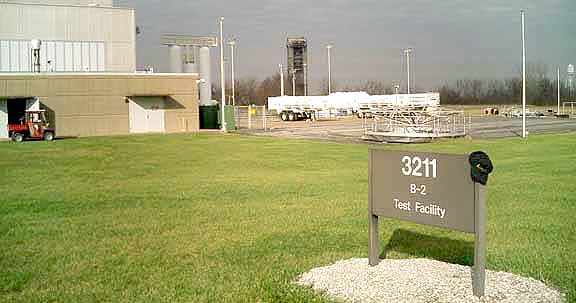 The B-2 (B2) rocket altitude test facility is at the NASA Plum Brook Station near Sandusky Ohio. Quite the place, Plum Brook Station that is, with 6400 acres of mostly open terrain. Plenty of room to test hydrogen based rocket engines. The B-2 (B2) rocket altitude test facility is at the NASA Plum Brook Station near Sandusky Ohio. Quite the place, Plum Brook Station that is, with 6400 acres of mostly open terrain. Plenty of room to test hydrogen based rocket engines. |
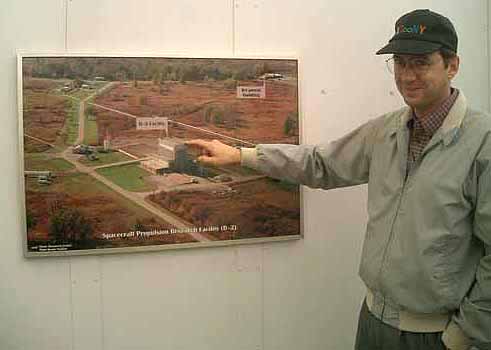
So here's where we are going.... Ahhh, right HERE |
|
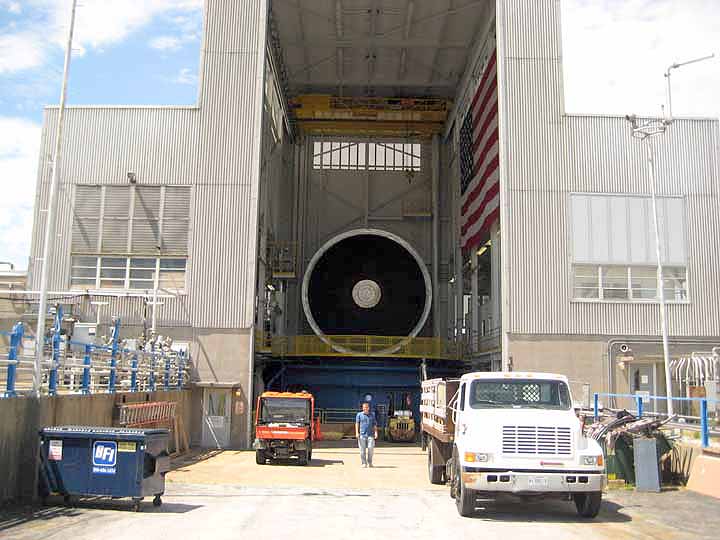 Looking into the facility and at the large and open "lid" of the test chamber.
Looking into the facility and at the large and open "lid" of the test chamber. |
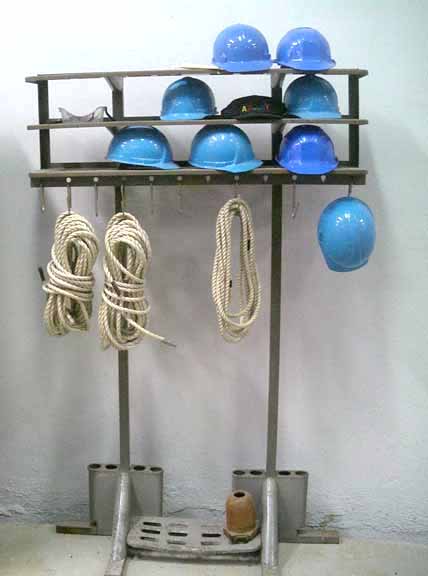 Before we go in, we need some protection. Help yourself, safety first. You can wear any hat, as long as it's blue. Before we go in, we need some protection. Help yourself, safety first. You can wear any hat, as long as it's blue. |
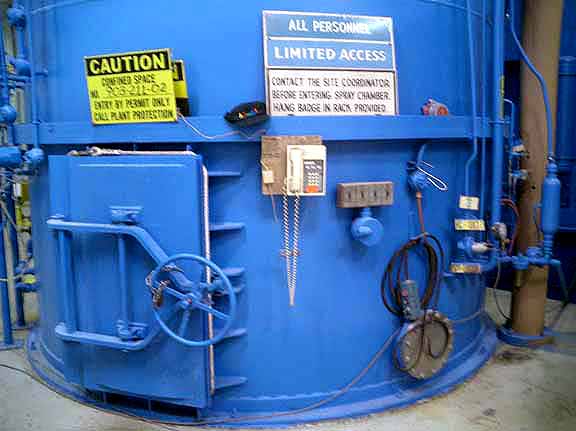 Limited access to this puppy, so let's be careful inside (this is just a little side chamber). Limited access to this puppy, so let's be careful inside (this is just a little side chamber). |
How it all works
So you have a large cryogenic space flight engine you want to test in simulated space conditions like where it would actually run. No problem. B2 can suck the test chamber down to 5x10-7 Torrs (0.00000001 PSI) so your rocket will feel right at home. Need it cold like space or hot due to the thermal heating from the sun? It will simulate this too at this low vacuum level. To actually fire the engine, well that happens in a low pressure environment of roughly 0.2 PSI. And when firing don't forget to stand back and close the hatches!
Official NASA stuff here
|
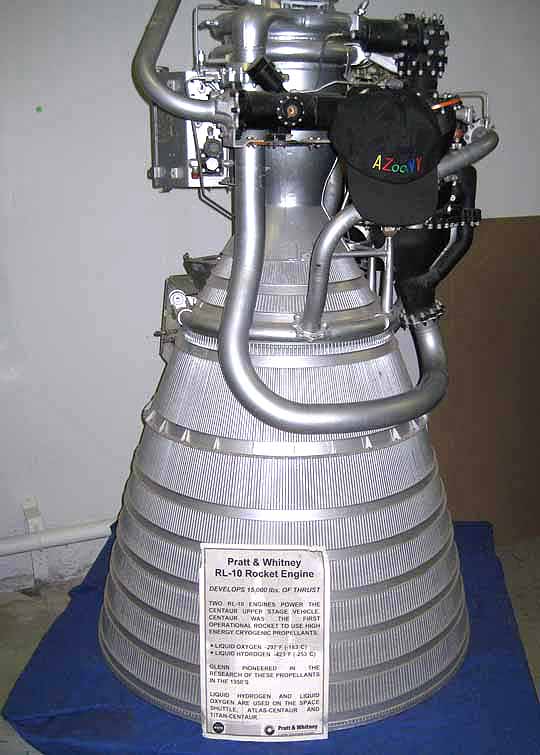
Here's our engine. Your basic second stage RL-10 rocket engine.
|
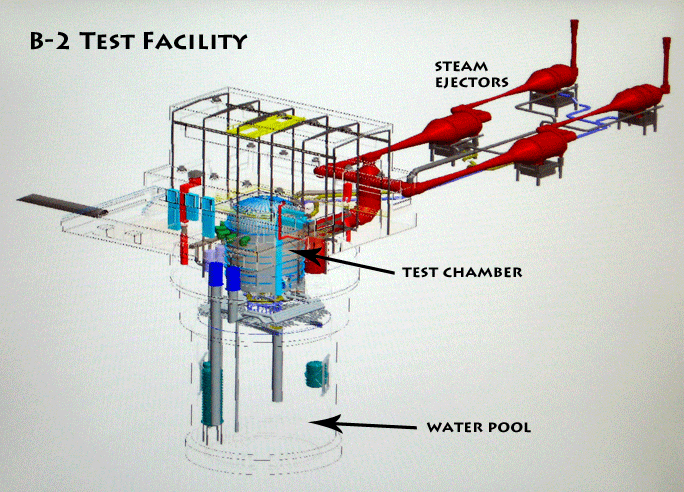
The leg bone's connected to the, hip bone.
The hip bone's connected to the... |
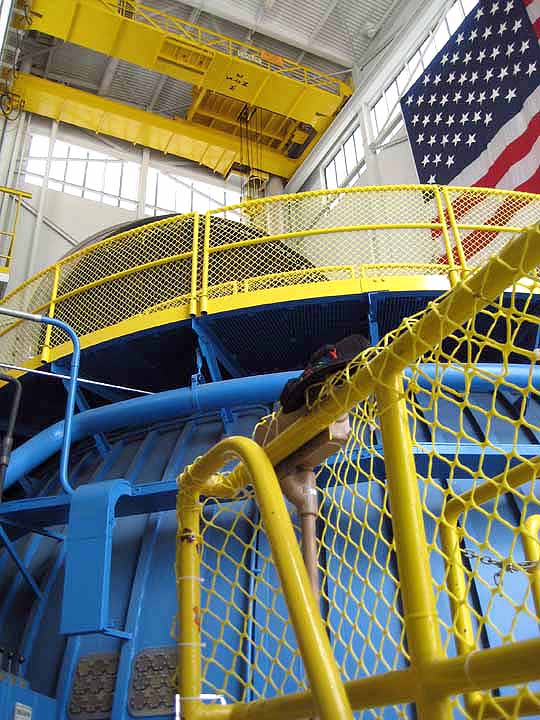 Lot's of safety rails to navigate around but let's go take a look down the throat of this thing.
Lot's of safety rails to navigate around but let's go take a look down the throat of this thing. |
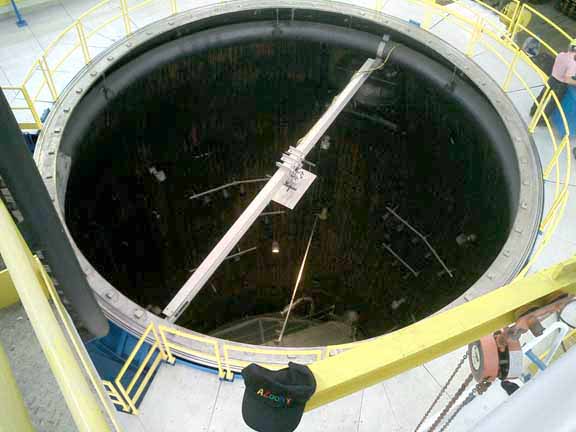 Here's the top of the giant test chamber. It goes into the ground 6 stories or so below. Most of the working-end of the rig is below ground level. Here's the top of the giant test chamber. It goes into the ground 6 stories or so below. Most of the working-end of the rig is below ground level. |
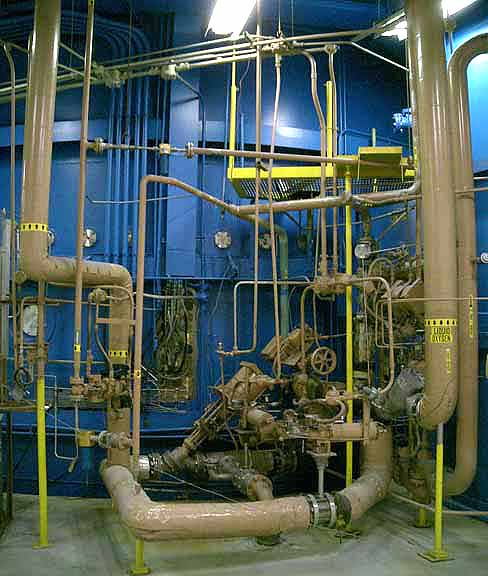
Holly crap a plumber's nightmare. Wouldn't it of been easier to just put the hot on the left and the cold on the right?
But really, this puppy sucks down to create a vacuum of 0.00000005 torrs or 0.00000001 PSI (that's 1 air molecule per square inch give or take a few). |
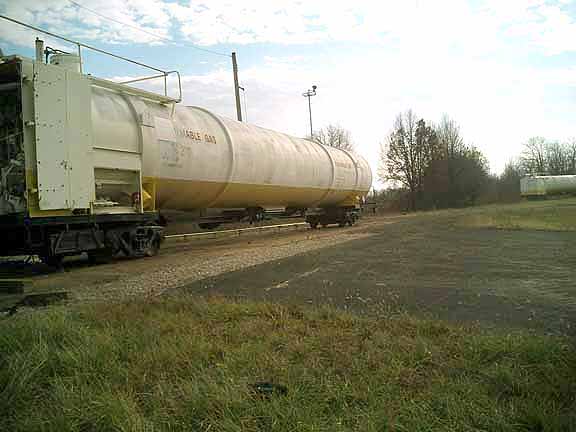
Many of the Plum Brook facilities *had* rail access to economically provide massive amounts of fundamental experiential elements (such as nitrogen), and B2 is no exception. Short-sighted American ingenuity got rid of most of the rails though. Perhaps it will be renewed someday as a "green" measure as two rail mainlines are nearby. |
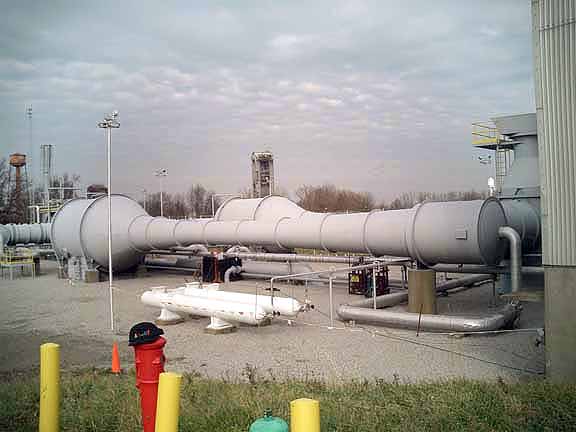 A typical large rocket exhausts at roughly 3000 degrees F. You'll need to quench that exhaust with water to a temperature more manageable, but then you have a massive exhaust/steam mess to deal with. In come these steam ejectors to remove some of the energy from your steamy stew.
A typical large rocket exhausts at roughly 3000 degrees F. You'll need to quench that exhaust with water to a temperature more manageable, but then you have a massive exhaust/steam mess to deal with. In come these steam ejectors to remove some of the energy from your steamy stew. |
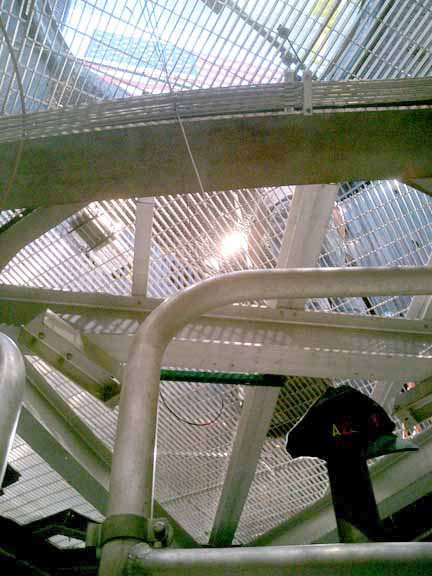 Looks like a grid-worker's heaven but that's why the folks at NASA are involved.... Looks like a grid-worker's heaven but that's why the folks at NASA are involved.... |
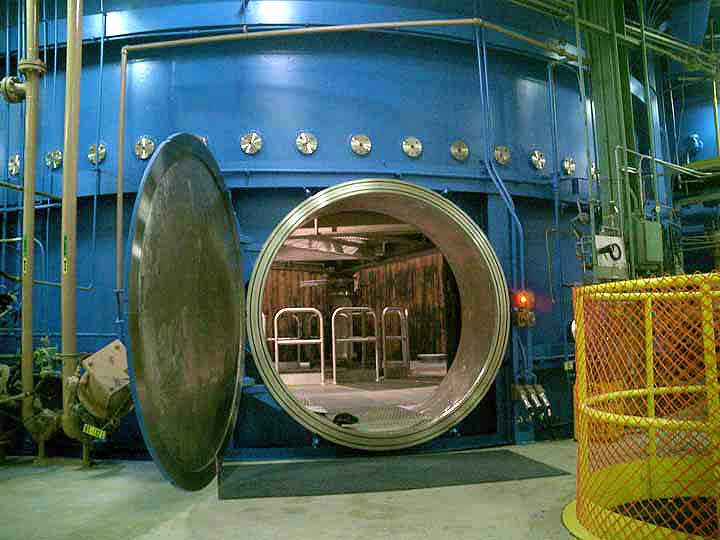
Entering the hollowed entrance of the B2 test chamber. It's way cool for sure. |
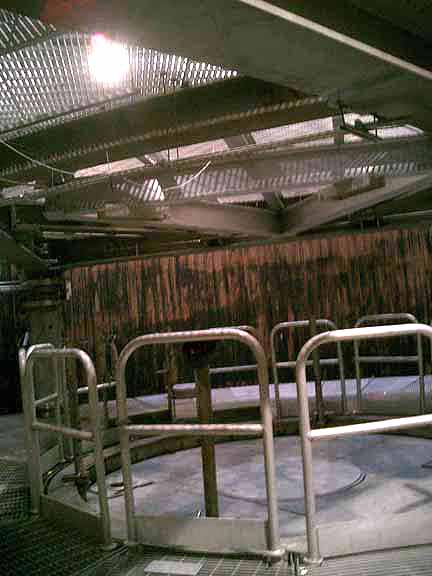
Here's the "floor" of the test chamber. If we had an actual rocket engine, it would be mounted here pointed down and through the covered hole in the center. |
|
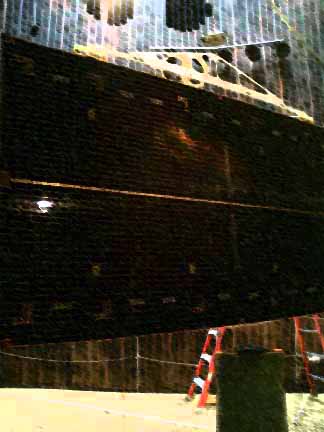 Or we could just use the vacuum chamber as a
Or we could just use the vacuum chamber as a
vacuum
chamber and vary the temperature to simulate space conditions. |
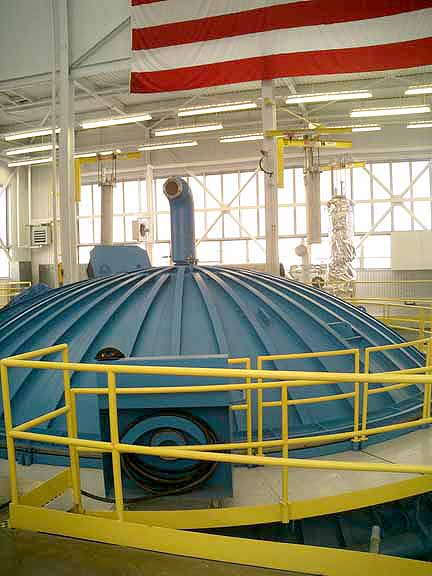 Okay, we have our test article in so we shut the clam-shell lid. When we test we will be far way in case anything blows. Okay, we have our test article in so we shut the clam-shell lid. When we test we will be far way in case anything blows. |
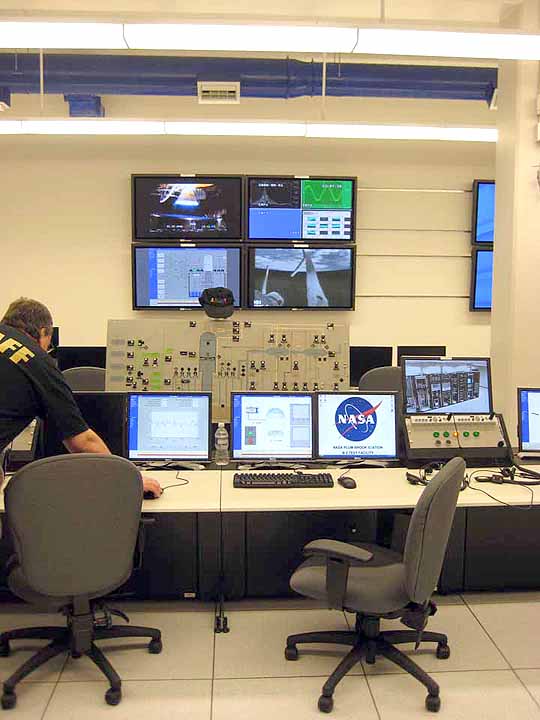 B-Control. This is where we will run our test from. All systems "go". Put the bread in the toaster. Don't try this at home kids, dangerous stuff:-)
B-Control. This is where we will run our test from. All systems "go". Put the bread in the toaster. Don't try this at home kids, dangerous stuff:-) |
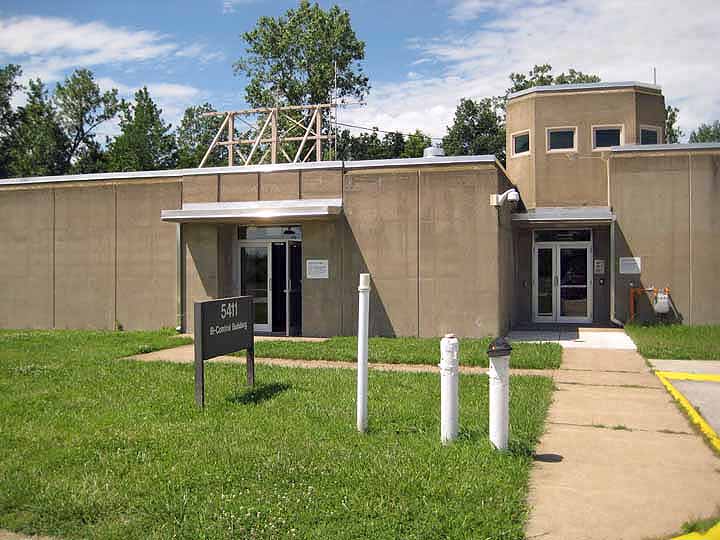 B Control - A safe distance away and concrete reinforced.
B Control - A safe distance away and concrete reinforced. |
|
|
|
|